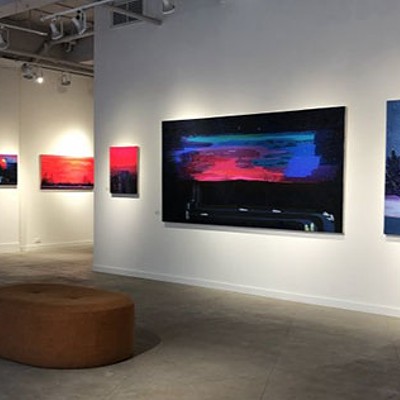
To June 2
ViewPoint Gallery, 1459 Brenton Street
I n Oracle, Arizona, there is a rainforest in the desert. Specifically, there is a rainforest in a biosphere in a desert, and it is the largest closed ecosystem to date. On a recent visit to the research facility and tourist attraction known as Biosphere 2, photographer Ford Doolittle documented the constructed environment and the lush greenery that seemed to him to be "trying to escape from the enclosing glass."
The resulting images make up The Captive Rain Forest, on now at ViewPoint Gallery. In his thoughtful photographs, Doolittle manages to capture the lines between combat and compatibility of plant life and human construction. The natural elements flourish in this environment while also working against their unnatural home—ferns and trees press against the glass, unconsciously moving to burst through the layer that protects them from the harsh desert air outside.
Doolittle explores the visual similarities between the organic materials and their constructed environment, with cactus spines mirroring the crossed bars of the glass roof, while also calling to attention the stark contrasts between flora and built environment, such as yellow caution tape wrapped around the thick body of a plant. It is the mixing of nature and mechanics—the specificities of this larger than life terrarium—that draws his eye. At first glance many of the images appear manipulated with different elements layered on top of one another, but Doolittle has taken advantage of the glass enclosure and used the reflections to create dynamic compositions.












